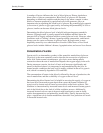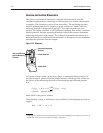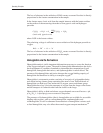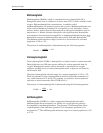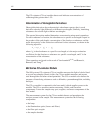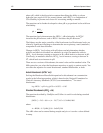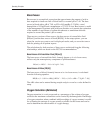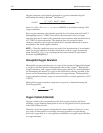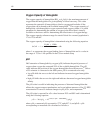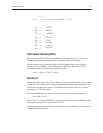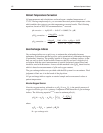
Operating Principles IĆ25
S the polychromator—which consists of coupling lenses, entrance slot, collimating
mirror, grating camera mirror, and the diode array
Light from the lamp passes through the lenses, a series of filters, and the fiber optic
coupler to the sample chamber. The light is coupled from the sample chamber, by a
second pair of lenses, to the polychromator. In the polychromator, light is
collimated by the first mirror and is diverted to the grating which separates the
light into a continuous spectrum of wavelengths. The spectrum of light is focused
by the second mirror to the diode array where the intensities at several wavelengths
are measured.
The sample chamber is located between the fiber optics and the polychromator.
After passing through the hemolyzer, the sample flows through tubing into the
sample chamber, where the sample is warmed to 37°C and then measured. The
sample chamber also acts a fluid detector, sensing when sufficient sample reaches
the chamber for measurement.
Other Reported Parameters
This section describes the specific reported parameters generated by the 800
system. The parameters are all based on NCCLS/IFCC recommendations unless
otherwise noted.
Bicarbonate Ion (HCO
3
-
)
The bicarbonate ion (HCO
3
–
) is the major buffer substance present in the body, and
plays a major role in maintaining the pH level in blood. It is present in large
amounts in the blood as a result of the dynamic state of CO
2
in the blood. CO
2
is
transported through the blood as bicarbonate (HCO
3
–
), dissolved CO
2
, and
carbonic acid (H
2
CO
3
). The following equation describes the dynamic state of
CO
2
in blood:
CO
2
+ H
2
O { H
2
CO
3
{ HCO
3
–
+ H
+
The majority of CO
2
is transported as HCO
3
–
. Its role as a base is seen through the
Henderson-Hasselbalch equation:
pH + pK ) log
base
acid
Substituting HCO
3
–
as the base and dissolved CO
2
and H
2
CO
3
(which equals
0.0307 pCO
2
) as the acid, the equation reads as follows:
[HCO
3
–
]
0.0307 pCO
2
pH = pK + log





